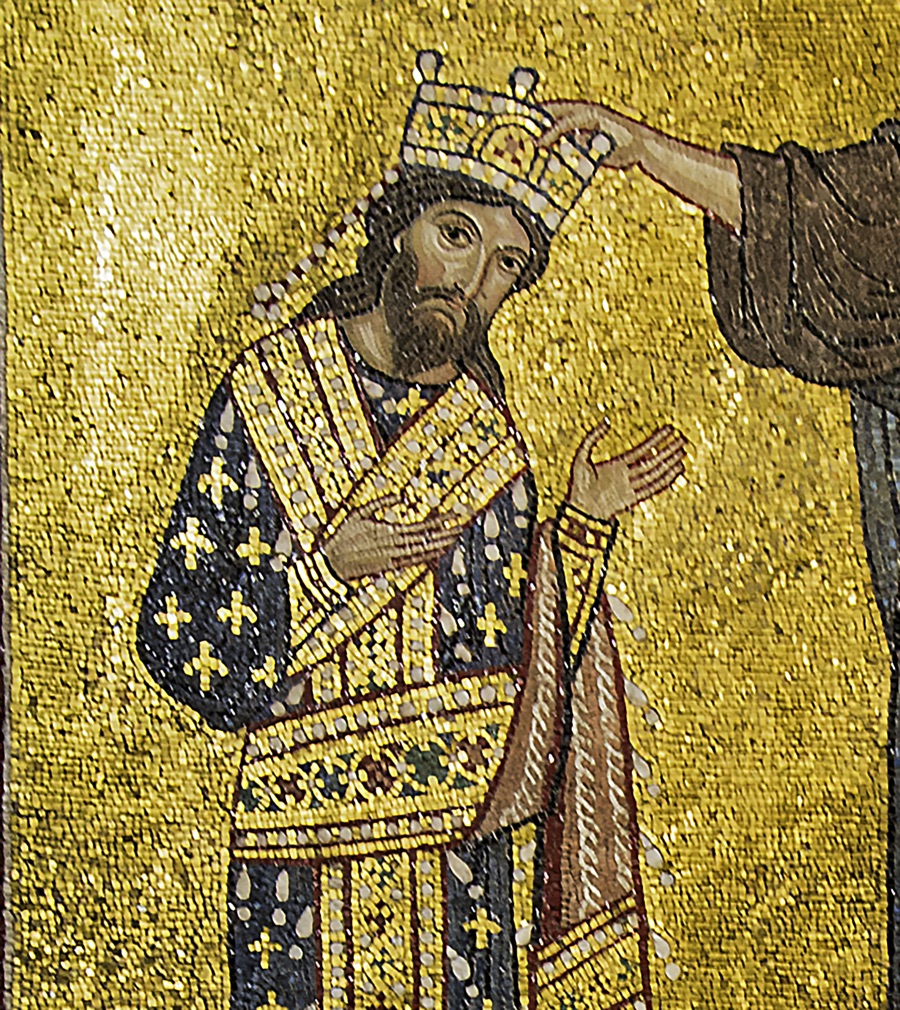Successor of the Grand Count Roger I of Hauteville, Roger II was born in Mileto on 22 December 1095. When Duke William died without an heir, he was appointed Duke of Salerno and, despite the hostility of Pope Honorius II, he obtained important victories in Calabria and Apulia in a short space of time. In 1130, he became king of Sicily, Apulia, Calabria and Capua. The coronation that took place in Palermo and therefore the birth of the Kingdom of Sicily is dated 25th December of the same year. During the ceremony, Roger wore a sumptuous cloak, embroidered with gold filigree and embellished with gems, made in the Officine Reali “il Tiraz” in Palermo. Today, the precious artefact is kept in the Hofburg treasury (WeltlicheSchatzkammer), i.e. the imperial museum of Vienna. Later, the new Pope, Innocent II, also hindered his efforts, but Roger succeeded in unifying Sicily and southern Italy. A Sovereign who could be defined as enlightened, he strengthened the royal authority and promoted culture, art and architecture which, thanks to his interests, experienced a true renaissance. His kingdom was a blend of different cultures: Arab, Latin, Greek, Provençal, Byzantine. Roger died in Palermo on 26 February 1154. 